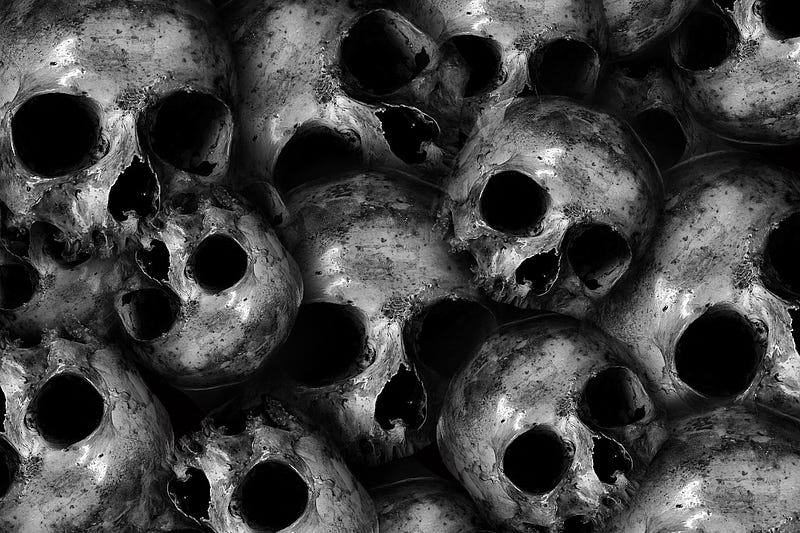# Unraveling the Mystery of the 97 Skeletons in Hamin Mangha
Written on
Chapter 1: Discovery of the Skeletons
In an intriguing archaeological find, a one-room dwelling at the Hamin Mangha site in China has revealed 97 human skeletons. These remains were discovered in various layers within the structure, indicating that some bodies were disposed of en masse while others were added individually. This raises the question: who were the unfortunate souls associated with this house?
After the house became a repository for these corpses, it was subsequently engulfed in flames. It remains uncertain whether this fire was accidental or the result of deliberate actions. Many of the bones sustained damage from collapsing roof beams, yet researchers managed to ascertain the age and gender of most individuals found in the structure known as F40.
The majority of the deceased were between 19 and 35 years old, with no individuals over approximately 40. Both men and women were of similar ages, with average ages of 30.6 years for women and 34.3 years for men. Notably, these individuals were not interred in the traditional sense; they were discovered in the same condition as they had been left around 5,000 years ago. This has led a team from Jilin University, directed by Ya Wei Zhou and Hong Zhu, to theorize that these remains may belong to victims of an epidemic.
Section 1.1: The Nature of the Disease
The epidemic likely struck abruptly and spread with such speed that the living could not keep pace with the burial of the deceased. Consequently, one of the houses may have been repurposed as a mass grave. The settlement at Hamin Mangha predates the advent of writing in the region, leaving us without historical records to verify any potential epidemics from that era. Remarkably, similar to the major pandemics that impacted Europe and other areas—such as the Black Death and the Spanish flu—this disease left no discernible traces on the victims' bones.
If the Hamin Mangha community was indeed ravaged by an epidemic, it likely claimed a substantial portion of its inhabitants. Archaeologists have documented 29 houses within the settlement. Assuming each house was home to a family of 6-7 individuals, the total population might have been around 200, suggesting that nearly half of them could have been laid to rest within F40.

Chapter 2: Historical Epidemics
Throughout history, two significant epidemics have resulted in the deaths of millions globally. The first, referred to as the "Spanish flu," is estimated to have claimed between 50 and 100 million lives, representing 3-5% of the global population. In certain regions, such as Tahiti and Samoa, the mortality rates soared to 13% and 22%, respectively.
The second, the Black Death of the 14th century, resulted in an even higher death toll, with estimates ranging from 75 to 200 million. This plague eradicated approximately 45-50% of Europe's population at the time, with certain areas like Italy, southern France, and Spain experiencing death rates as high as 75-80%.
In both instances, the sheer volume of casualties made traditional burial practices unfeasible. During the Spanish flu, morgues became overcrowded, leading to mass burials without coffins to curb the spread of disease. Similarly, during plague outbreaks, many bodies were incinerated due to the overwhelming number of deceased individuals.
While the Black Death affected people of all ages, the "Spanish flu" predominantly targeted younger individuals, with nearly 99% of victims under the age of 60, although very few children were among them. Researchers attribute many of these deaths not solely to the virus but to an aggressive immune response triggered by the infection.
Section 2.1: Possible Connections to Hamin Mangha
The archaeological findings at Hamin Mangha hint that the skeletons may belong to those who succumbed to an epidemic. The significant number of remains found in F40, coupled with the manner of their disposal, supports the idea that these individuals were indeed victims of a widespread illness.
Notably, the age distribution among the deceased parallels that of victims from the Spanish flu. Moreover, similar mass burials with comparable age demographics have been uncovered at the Miaozigou and Lajia sites in southeastern China, suggesting a possible recurrence of this epidemic.

Thank you for your interest in this exploration! If you found this information valuable, consider supporting my work through donations or tips. Your contributions enable me to continue producing insightful content.
